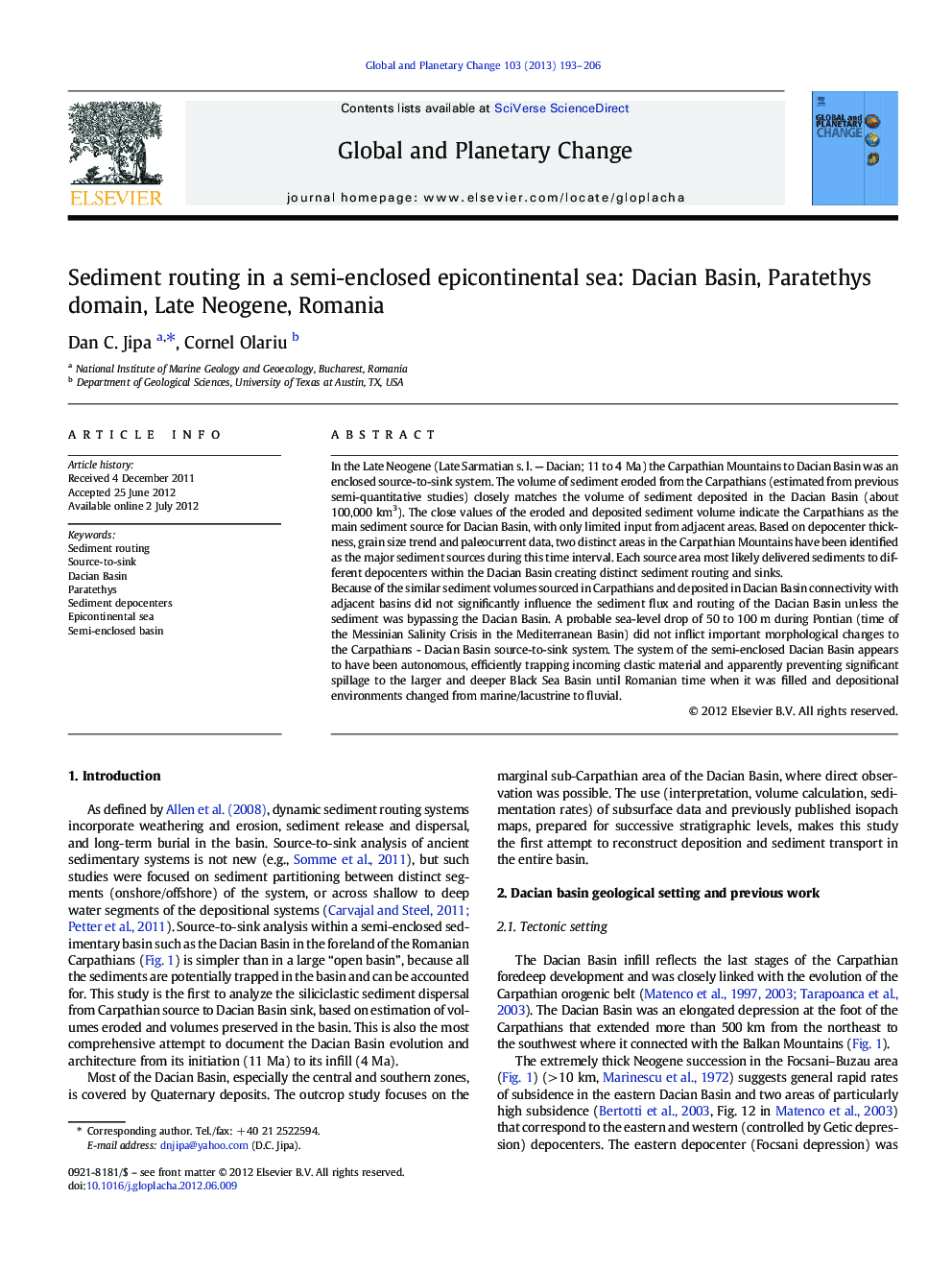| کد مقاله | کد نشریه | سال انتشار | مقاله انگلیسی | نسخه تمام متن |
|---|---|---|---|---|
| 4463569 | 1621678 | 2013 | 14 صفحه PDF | دانلود رایگان |

In the Late Neogene (Late Sarmatian s. l. — Dacian; 11 to 4 Ma) the Carpathian Mountains to Dacian Basin was an enclosed source-to-sink system. The volume of sediment eroded from the Carpathians (estimated from previous semi-quantitative studies) closely matches the volume of sediment deposited in the Dacian Basin (about 100,000 km3). The close values of the eroded and deposited sediment volume indicate the Carpathians as the main sediment source for Dacian Basin, with only limited input from adjacent areas. Based on depocenter thickness, grain size trend and paleocurrent data, two distinct areas in the Carpathian Mountains have been identified as the major sediment sources during this time interval. Each source area most likely delivered sediments to different depocenters within the Dacian Basin creating distinct sediment routing and sinks.Because of the similar sediment volumes sourced in Carpathians and deposited in Dacian Basin connectivity with adjacent basins did not significantly influence the sediment flux and routing of the Dacian Basin unless the sediment was bypassing the Dacian Basin. A probable sea-level drop of 50 to 100 m during Pontian (time of the Messinian Salinity Crisis in the Mediterranean Basin) did not inflict important morphological changes to the Carpathians - Dacian Basin source-to-sink system. The system of the semi-enclosed Dacian Basin appears to have been autonomous, efficiently trapping incoming clastic material and apparently preventing significant spillage to the larger and deeper Black Sea Basin until Romanian time when it was filled and depositional environments changed from marine/lacustrine to fluvial.
► This paper deals with the sediment routing in a semi-enclosed, Upper Neogene basin.
► The Dacian Basin received most of its detritus from two Carpathians source-areas.
► The eastern depocenter enlarged because equilibrium between subsidence and supply.
► The western depocenter was a deep water sink before being infilled with sediments.
► The Carpathian-Dacian was a closed source-to-sink sediment system between 11-4 Ma.
Journal: Global and Planetary Change - Volume 103, April 2013, Pages 193–206